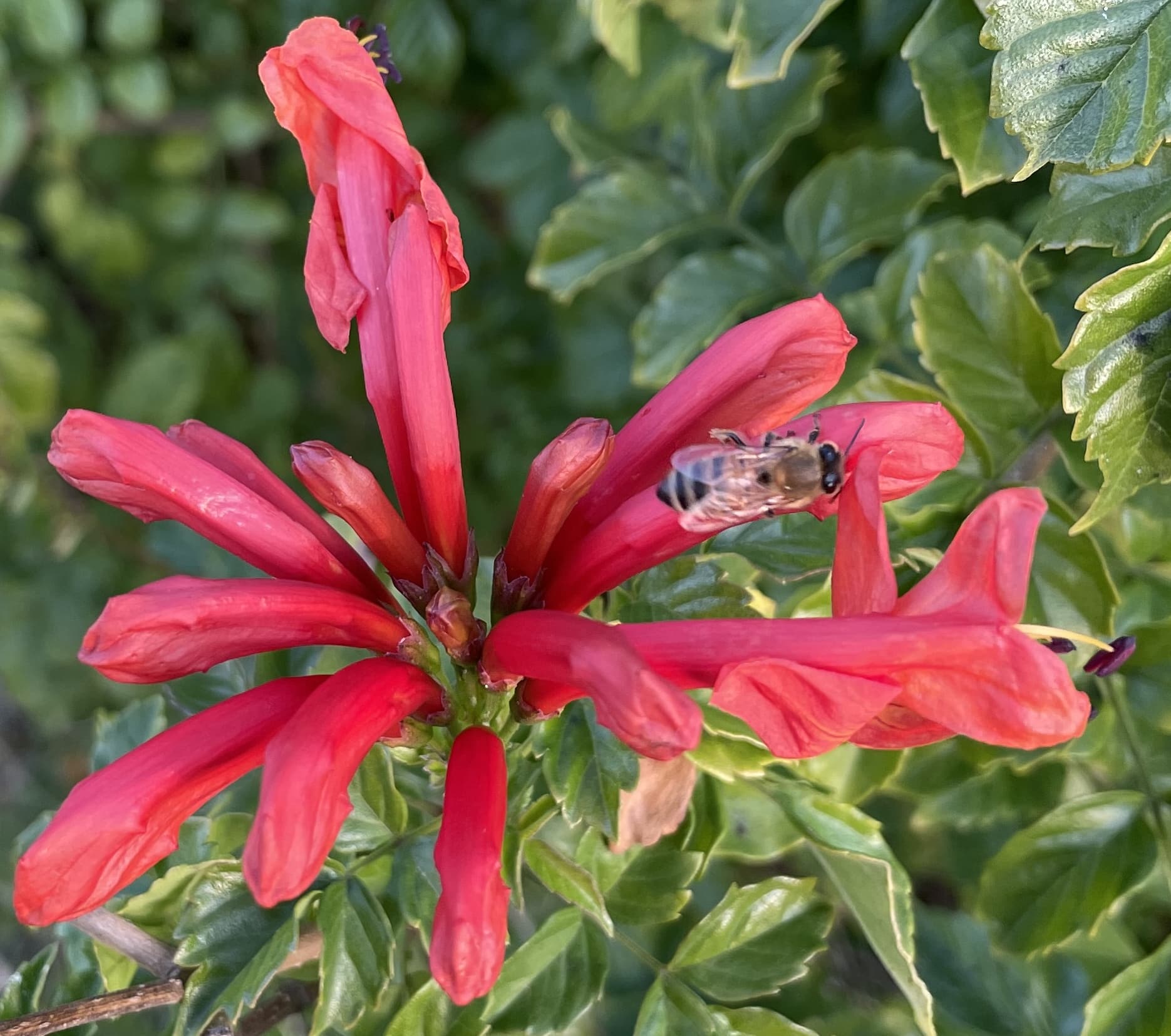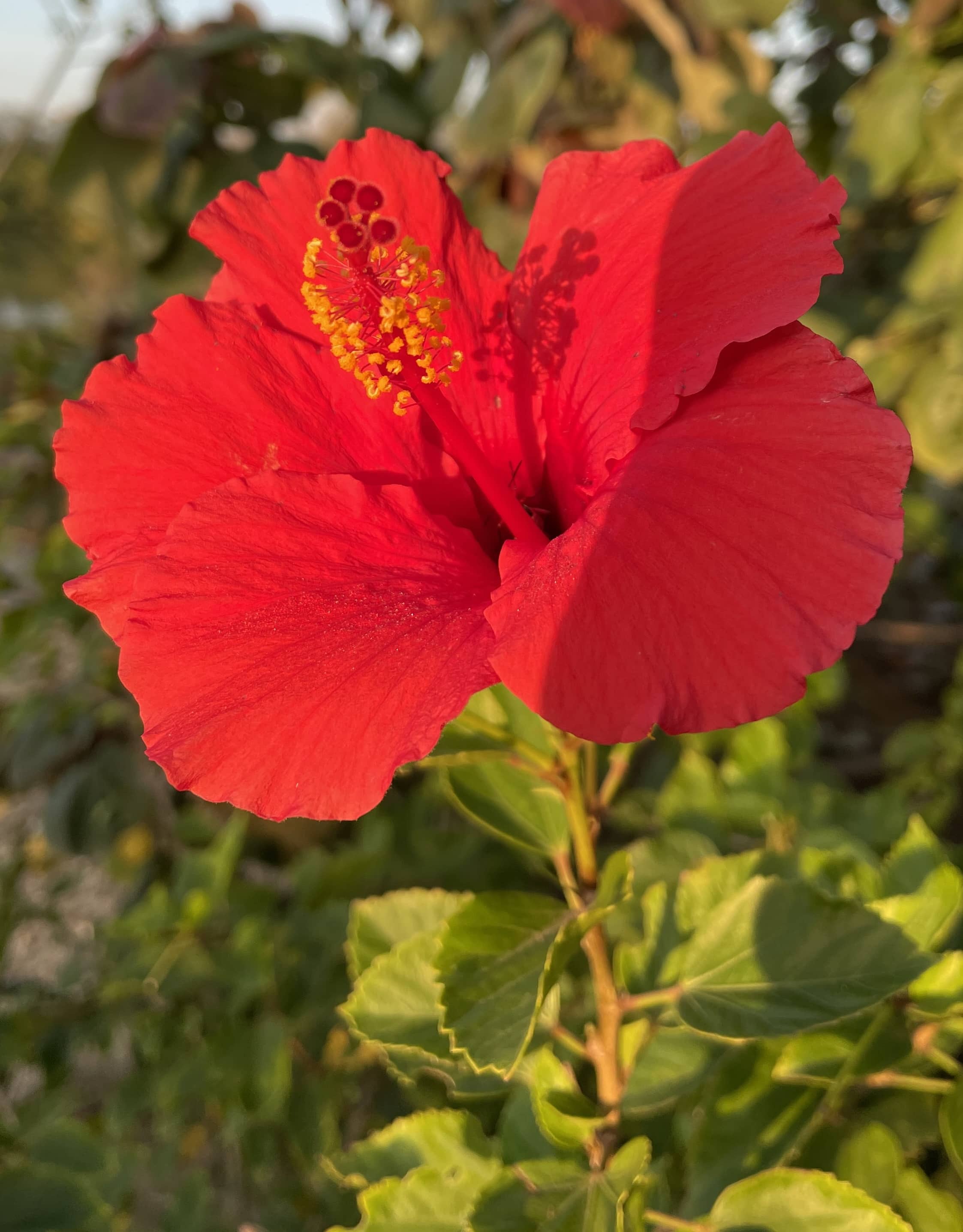A naturalized flowering tree that provides frilly white blooms during most of the year is pata de chivo, commonly called goat’s foot tree. The scientific name is Bauhinia divaricata. The tree grows quite well in the Valley’s USDA Zone 10. Pata de chivo can bloom into December, rest for a couple of weeks and then begin blooming in January. It attracts butterflies, bees and hummingbirds.
Another showy and popular tree in residential Valley gardens is the Hong Kong orchid tree, Bauhinia blakeana, which attracts butterflies and bees during the winter. It is a legume, and interesting to note, it is sterile. It does not produce fruit, seed pods nor seeds.
The tree is fast-growing, highly drought tolerant and generally multi-trunked; it can grow to 20 feet tall and 25 feet wide. Plant in full sun with good drainage. Expect it to flower in its second year with an abundance of large, vibrant, bright magenta, orchid-like blooms from January to March.
Interestingly, plantains, Musa paradisiaca (cousin to the banana plant) are easy to grow in neighborhood gardens. They are not native to the Valley but are a popular cultivated food source; when flowering, they attract bees and hummingbirds.
A plantain stand can take up considerable space. An individual plant can reach from seven to 30 feet tall. Plantains propagate from underground, sending up shoots — pups — from a parent plant. Pups can be transplanted by carefully digging around the base and then cutting base and roots with a sharp knife.
A large, winter-blooming shrub that sends out runners to increase its garden foot print is Cape honeysuckle, Tecoma capensis. It blooms profusely in January. The dense, shiny, dark green foliage is a sheltered perch for orioles and mockingbirds. Butterflies, hummingbirds and bees are attracted to the flower’s nectar. Orioles also will pierce the base of a bloom for nectar.
Cape honeysuckle is native to the region in South Africa by the Cape of Good Hope. It is a fast growing perennial shrub; plant in full sun in moderately fertile, well-drained soil. It is high heat and drought tolerant. The runners can travel 30 or more feet and take root or can be clipped to keep the shrub a single unit.
Don’t forget the glorious hibiscus for winter blooms. Hibiscus are in the Malvaceae (mallow) family; their origins are in ancient China. Confederate rose, Hibiscus mutabilis, is a tall shrub that can grow to 15 feet in height with branches shooting out to a circumference of 10 feet. Its blooms attract bees and butterflies. It is fast growing and nearly maintenance free. Plant in full sun in well-drained soil.
Smaller hibiscus shrubs also provide showy blooms to brighten a winter day. Locally, the shrubs can reach heights of five feet and taller. Hibiscus flowers have no scent, but none the less attract butterflies, bees and hummingbirds.













